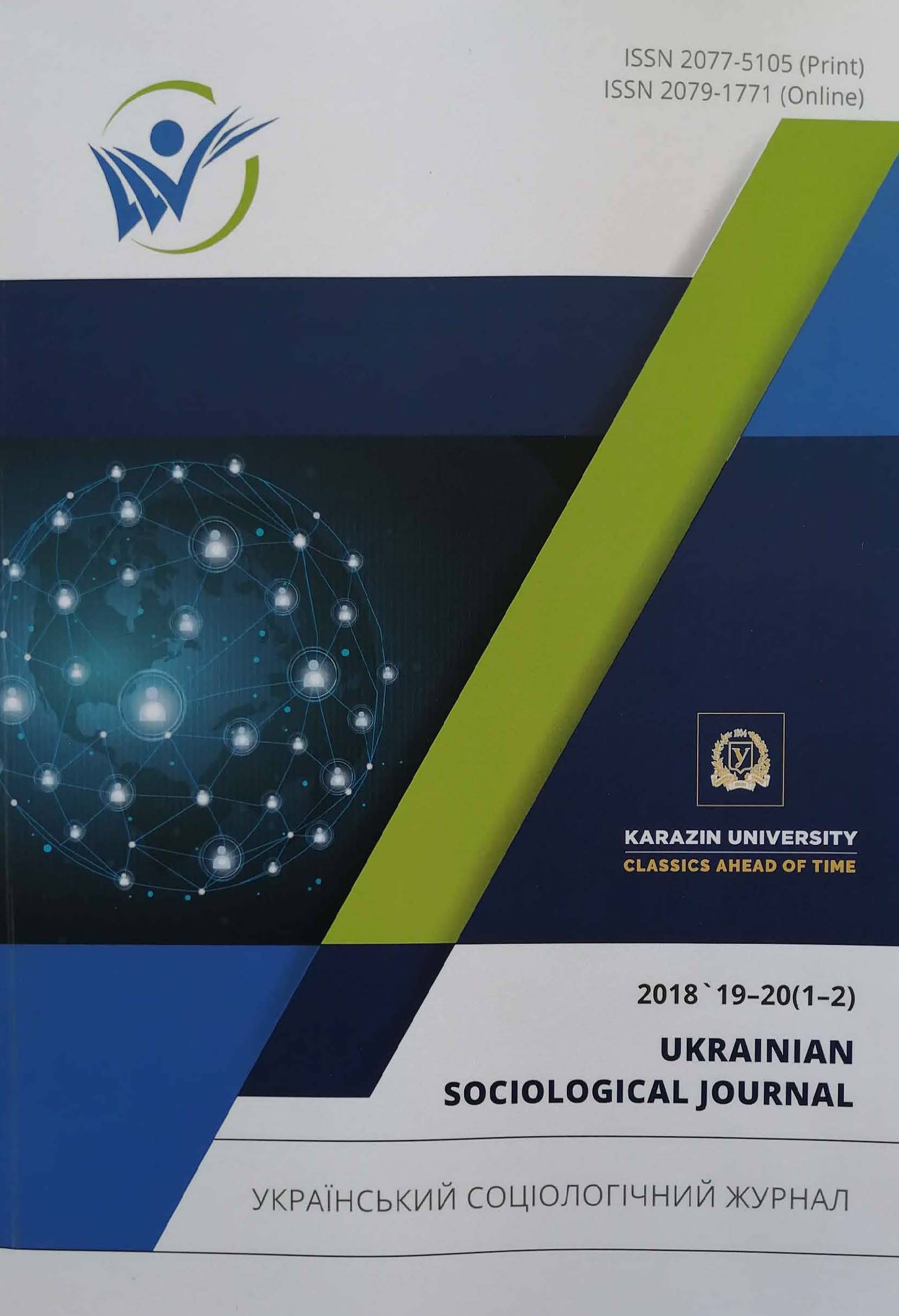Labour Motivation: Empirical Typology and Differentiation Perspectives
Abstract
In the article, labor motivation is analyzed as a phenomenon of social consciousness connected with the specifics of individuals’ participation in social production and with their place in social structure. The the association between a certain type of labor motivation, social-economic status and specificities of economic morality possessed by individuals is revealed; the possibilities of analytical use of labor motivation as an indicator of a person’s place in the social structure are defined. Based on the results of the second wave of European social survey (ESS), the HoRoIn index is introduced that takes into account a complex of features regarding the extent to which favorable toward employees working conditions in a particular country were ensured. Index includes indicators of distribution of workload, income, and unemployment, as well as current job and life satisfaction. A comparative analysis of four countries with different index values (Ukraine, Portugal, Finland, and Denmark) is performed in order to reveal universal patterns independent of the locally specific context. Labor motivation is defined based on the features which respondents consider more or less important when choosing a job. The results of cluster analysis are provided that has shown different types of labor motivation having distinctive profiles – the distribution graphs of mean values in groups. It is emphasized that the set and volume of these types change with the HoRoIn index value, based on which the conclusion about the association between the structure of labor motivation and the structure of employment and inequalities is formulated. For analyzing the association between the defined types of labor motivation, social-economic status (according to E. Wright’s model), and economic morality (according to ESS methodology), discriminatory analysis and classification trees method are used. It is being noted that the results of these procedures show high probability for the association between the characteristics in question that has selective rather than systematical nature, in other words, that is expressed in the interdependence between separate features. A conclusion is made about good perspectives of further research of the labor motivation type as a factor and indicator of individual’s place in social structure.
Downloads
References
Рабочий класс современной Украины / под ред. А.Г. Арсеенко. Киев: Институт социологии НАН Украины, 2017. 318 с.
Удалова Е. С. Ценность труда и трудовые ценности как фактор профессионального самоопределения личности. Известия ПГПУ им. В.Г. Белинского. 2011. № 23. с. 83–85.
Ламихов Ю. Б., Антонова О. Г. Управление мотивацией работников в условиях перехода к цифровому обществу. Материалы научно-практической конференции Дыльновские чтения «Общество и личность в условиях информационно-цифровых трендов». Саратов, 2019. с. 156–159.
Маркс К. Капитал. Критика политической экономии. Том второй. Книга II: Процесс обращения капитала. Ленинград, 1951. 527 с.
Дюркгейм Э. О разделении общественного труда. Метод социологии. Москва, 1990. 575 с.
Куценко О. Д. Общество неравных. Классовый анализ неравенств в современном обществе: Попытки западной социологии. Изд. центр Харьков. нац. ун-та им. В.Н. Каразина. 2000. 240 с.
Симончук Е. Классовые структуры в сравнительной перспективе. Украинское общество в европейском пространстве. Київ, 2007. с. 33–104.
Оксамитна С. М. Самовизначення громадян у соціальній структурі українського суспільства. Грані. URL: https://grani.org.ua/ index.php/journal/article/view/113/106/&usg=AOvVaw0EQOok4cST2NlFTs UNlF1h (дата обращения: 15.07.2019)
Коваліско Н. В. Теорія практик, практики і дослідження стратифікаційних порядків. Соціологія: теорія, методи, маркетинг. URL: http://irbis-nbuv.gov.ua/cgi-bin/irbis_nbuv/cgiirbis_64.exe?C21COM=2&I 21DBN=UJRN&P21DBN=UJRN&IMAGE_FILE_DOWNLOAD=1&Image_file_ name=PDF/stmm_2010_2_5.pdf (дата звернення: 15.07.2019)
ESS Round 2: European Social Survey Round 2 Data (2004). Data file edition 3.5. NSD - Norwegian Centre for Research Data, Norway – Data Archive and distributor of ESS data for ESS ERIC.
European Social Survey (2014) Weighting European Social Survey Data. URL: http://www.europeansocialsurvey.org/docs/methodology/ESS_ weighting_data_1.pdf (Last accessed: 15.07.2019).
ESS Round 2: European Social Survey (2016): ESS-2 2004 Documentation Report. Edition 3.6. Bergen, European Social Survey Data Archive, NSD - Norwegian Centre for Research Data for ESS ERIC.
Головаха Є. І., Горбачик А. П., Паніна Н. В. Україна та Європа: результати міжнародного порівняльного соціологічного дослідження. Київ, 2006. 142 c.
Райт Э. О. Марксистские концепции классовой структуры. Скепсис. URL: https://scepsis.net/library/id_608.html (дата обращения: 15.07.2019)
European Social Survey (2004) Economic Morality in Europe: Market Society & Citizenship. URL: http://www.europeansocialsurvey.org/ data/themes.html?t=econmorale (Last accessed: 15.07.2019).




